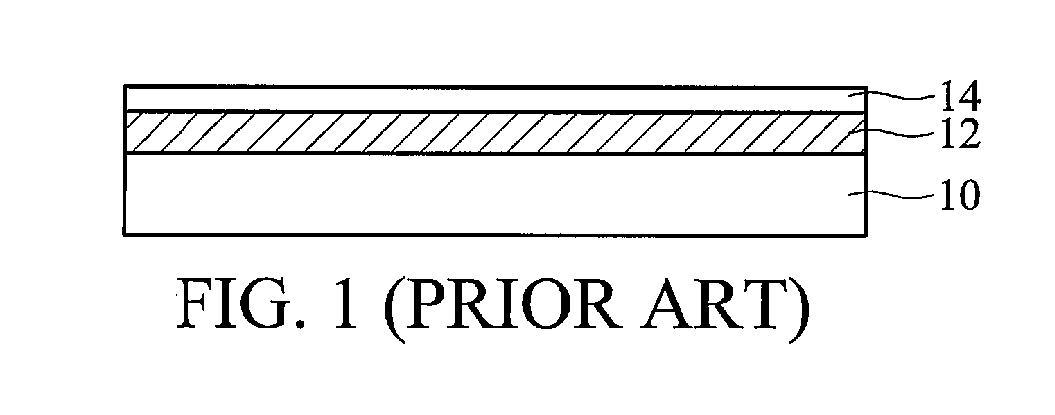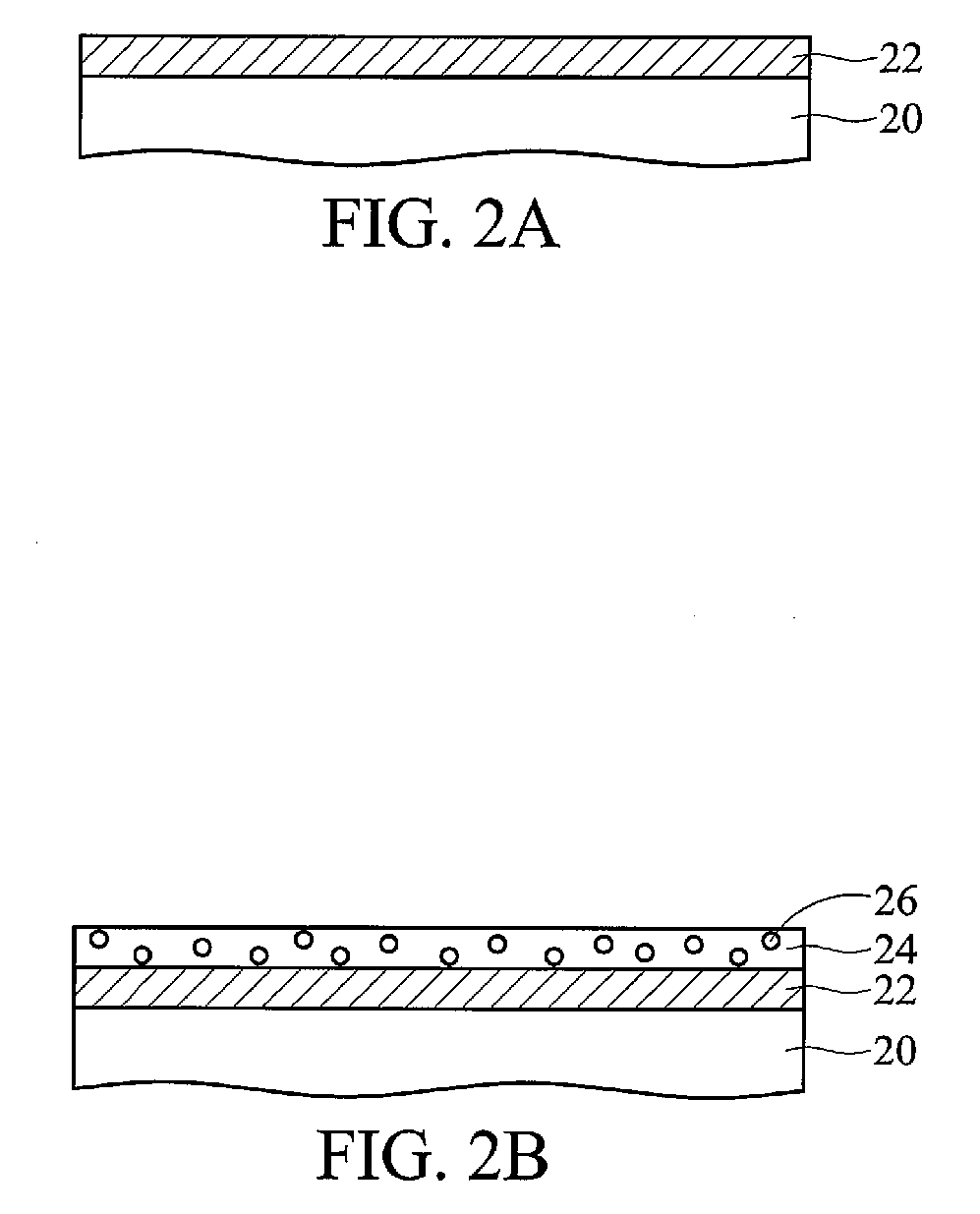Antireflective film and method for making thereof
- Summary
- Abstract
- Description
- Claims
- Application Information
AI Technical Summary
Benefits of technology
Problems solved by technology
Method used
Image
Examples
example 1
[0025]After the hard coat layer 22 has been formed, a solution of low refractive index layer was prepared. 100 parts by weight of low refractive resin was mixed with 100 parts by weight of isopropyl acetone and 100 parts by weight of methyl ethyl ketone to prepare the low refractive index solution (solution A). Next, 30 parts by weight of nanoparticles was added to the low refractive index solution (solution A) to form the low refractive index solution having a plurality of nanoparticles (solution B). 50 parts by weight of the low refractive index solution having the nanoparticles was further mixed with 80 parts by weight of methyl ethyl ketone to prepare the low refractive index solution having the nanoparticles according to Example 1.
[0026]Preferably, the low refractive index resin is a material such as fluorine-containing silane compound or fluorine-containing copolymer. In Example 1, the low refractive index resin was fluorine-containing copolymer Opstar TU2191 produced by JSR. ...
example 2
[0033]In Example 2, a low refractive index resin different from the resin in the Example 1, to prepare a low refractive index layer having a plurality of nanoparticles. In Example 2, the low refractive index resin was fluorine-containing copolymer LR204.33A produced by Nissan chemical.
[0034]100 parts by weight of low refractive index resin was mixed with the nanoparticles to form a low refractive index resin solution (solution C). Then, 50 parts by weight of the low refractive index resin solution was mixed with 80 parts by weight of solvent such as methyl ethyl ketone (MEK) to prepare a low refractive index layer solution.
[0035]The low refractive index layer solution was coated on the hard coat layer 22 then baked to form a low refractive index layer 24 with nanoparticles 26 on the hard coat layer 22, as shown in FIG. 2B. In an exemplary embodiment, the baking step was performed with an oven temperature of around 60° C. to 100° C. for 5 mins to 60 mins. Following the above describe...
PUM
| Property | Measurement | Unit |
|---|---|---|
| Fraction | aaaaa | aaaaa |
| Fraction | aaaaa | aaaaa |
| Diameter | aaaaa | aaaaa |
Abstract
Description
Claims
Application Information
 Login to View More
Login to View More - R&D
- Intellectual Property
- Life Sciences
- Materials
- Tech Scout
- Unparalleled Data Quality
- Higher Quality Content
- 60% Fewer Hallucinations
Browse by: Latest US Patents, China's latest patents, Technical Efficacy Thesaurus, Application Domain, Technology Topic, Popular Technical Reports.
© 2025 PatSnap. All rights reserved.Legal|Privacy policy|Modern Slavery Act Transparency Statement|Sitemap|About US| Contact US: help@patsnap.com



